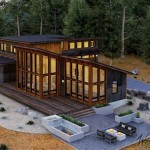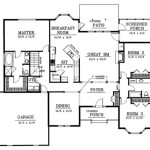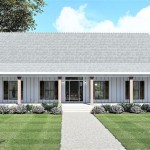Trailer Plans for Tiny House
Trailer plans for tiny houses offer a creative and affordable way to design and build a custom living space that fits your unique needs and lifestyle. Whether you're looking for a weekend getaway or a permanent home on wheels, there are numerous trailer plans available to help you turn your tiny house dreams into a reality.
Choosing the Right Trailer Plan
The first step in building a tiny house on a trailer is selecting the right plan. There are several factors to consider, including:
- Trailer size: The size of the trailer will determine the overall size and layout of your tiny house.
- Weight: The weight of your tiny house and its contents must be within the towing capacity of your vehicle.
- Hitch type: The type of hitch on your trailer must match the hitch on your vehicle.
- Floor plan: The floor plan should maximize space and functionality within the trailer's dimensions.
Types of Trailer Plans
There are various types of trailer plans available, including:
- Gooseneck trailers: These trailers have a hitch that connects to a ball in the bed of your truck, providing stability and a smooth ride.
- Bumper pull trailers: These trailers attach to the bumper of your vehicle and are generally less expensive and easier to tow than gooseneck trailers.
- Fifth wheel trailers: These trailers have a large hitch that sits in the bed of your truck, offering a more rigid connection and improved towing stability.
Designing Your Tiny House
Once you have chosen a trailer plan, you can start designing the layout of your tiny house. Consider the following:
- Living space: Include areas for sleeping, cooking, eating, and relaxing.
- Kitchen: Plan for a small but functional kitchen with appliances and storage.
- Bathroom: Design a compact bathroom with a toilet, shower, and sink.
- Storage: Maximize storage space through built-in cabinets, drawers, and under-bed storage.
Building Your Tiny House
Building a tiny house on a trailer requires careful planning and construction techniques. Here are some steps to follow:
- Materials: Select lightweight and durable materials such as aluminum siding, composite decking, and insulated panels.
- Framing: Use a sturdy framing system made of steel or wood I-beams.
- Insulation: Insulate your tiny house thoroughly to maintain a comfortable temperature year-round.
- Electrical and plumbing: Install electrical and plumbing systems according to building codes.
Benefits of Trailer Plans
Trailer plans for tiny houses offer numerous benefits:
- Affordability: Building a tiny house on a trailer is generally more affordable than traditional home construction.
- Mobility: The ability to move your tiny house allows for flexibility and adventure.
- Customization: Trailer plans provide a framework while still allowing you to customize the design to your liking.
- Sustainability: Tiny houses on trailers promote sustainable living due to their compact size and efficient use of resources.
Conclusion
Trailer plans for tiny houses provide a fantastic opportunity to create a unique and affordable living space. By carefully choosing a plan, designing the interior, and following proper construction techniques, you can build a tiny house that meets your specific needs and allows you to enjoy the benefits of a mobile lifestyle.

Tiny House Trailer Design An Engineering Case Study Example

Gives A Good Idea Of Tiny House Lengths Square Footage With Basic Layout Elements In Relation To On Wheels Movement

Tiny House Trailer Design An Engineering Case Study Example

Custom Plans Elevations Now Available Tiny House Basics

Trailers Tiny Smart House

Tiny House Floor Plans 32 Home On Wheels Design

Tiny House Trailer Frame Plans 20 Tandem Axle 14 000 Lbs

Tiny House Plans The Project

Plans Purchase Healthy Homes

Tiny Home Floor Plans Trailer Google Search House








